Bringing vibrant, living colors into your home through an aquarium can be a rewarding experience that enhances your living space while providing a soothing, natural focal point. However, many potential fish owners hesitate to start this hobby due to concerns about complicated care requirements. The good news is that several species of colorful fish are surprisingly low-maintenance, making them perfect for beginners or busy aquarists.
These fish combine visual appeal with hardiness and adaptability to various water conditions commonly found in American homes. Whether you’re setting up your first tank or looking to add some easy-to-maintain species to your existing aquarium, these five colorful fish species offer the perfect balance of beauty and simplicity.
Understanding What Makes a Fish “Easy to Care For”
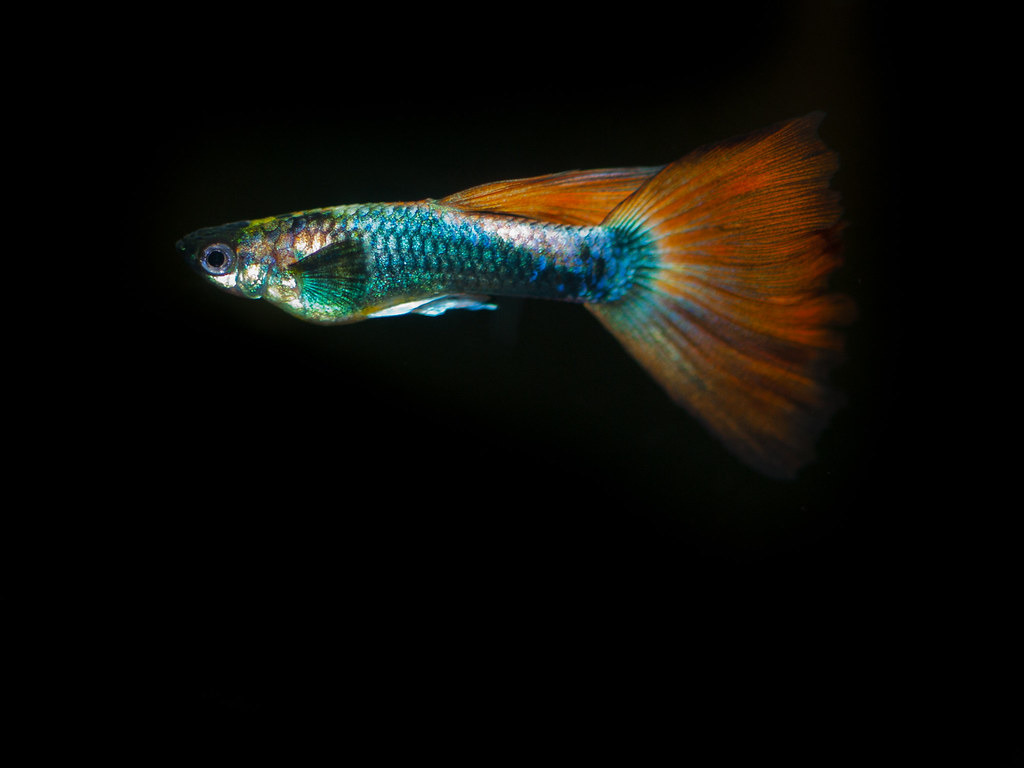
Before diving into specific species, it’s important to understand what qualifies a fish as “easy to care for” in the context of home aquariums. Easy-care fish typically demonstrate resilience to fluctuations in water parameters, including temperature, pH, and hardness, conditions that can vary widely across different U.S. regions. These fish generally have modest space requirements, meaning they can thrive in smaller tanks that fit comfortably in apartments or homes with limited space.
Additionally, low-maintenance species usually have flexible dietary needs that can be satisfied with readily available commercial fish foods rather than specialized or live options. Finally, these fish tend to have peaceful temperaments, making them compatible with a variety of tank mates and reducing the stress of managing aggressive behaviors or territorial disputes.
Guppy (Poecilia reticulata): The Living Rainbow
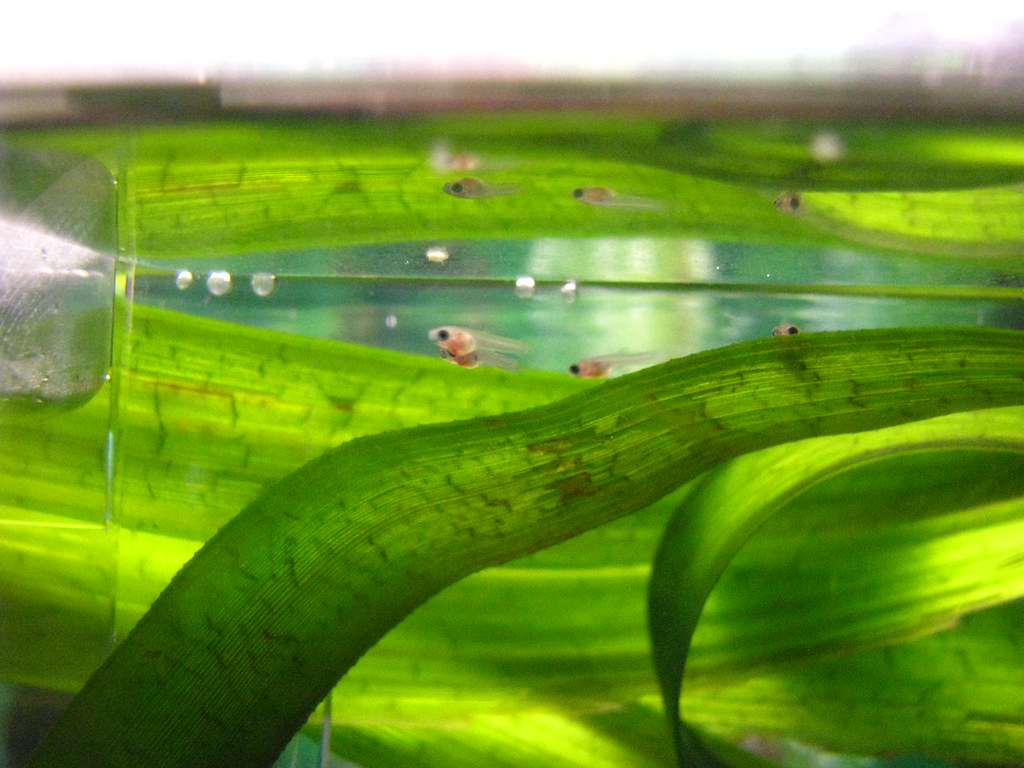
Guppies rightfully earn their place at the top of most beginner-friendly fish lists thanks to their extraordinary combination of vibrant colors and minimal care requirements. Males display spectacular fan-like tails splashed with patterns in electric blues, fiery reds, sunset oranges, and emerald greens—often all on the same fish. These small livebearers adapt to a wide range of water conditions, though they prefer temperatures between 72-82°F and slightly alkaline water.
Their small size (males reach about 1.5 inches, females about 2.5 inches) means a group can thrive in tanks as small as 10 gallons, making them perfect for desktop or countertop aquariums. Guppies readily accept standard tropical fish flakes supplemented occasionally with frozen or freeze-dried options like brine shrimp or bloodworms for optimal coloration.
Guppy Care Requirements and Lifespan
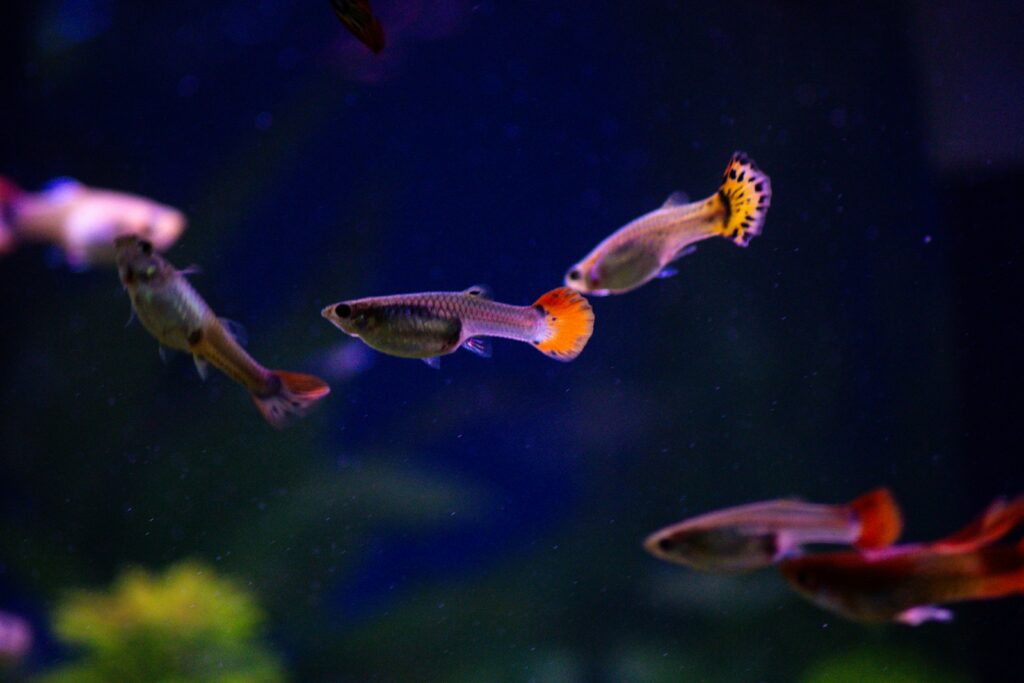
Setting up a guppy tank requires minimal specialized equipment, making them particularly appealing to novice aquarists in the United States. A simple filter, heater, and standard LED lighting is sufficient to keep these fish healthy and showcase their colors. Guppies are social creatures that thrive in groups, with a recommended ratio of two or three females per male to prevent the females from becoming stressed by overzealous breeding attempts.
With proper care, guppies typically live between one and three years, though some particularly robust specimens have been known to reach the four-year mark. Their reproductive nature means you’ll likely witness the miracle of live birth if you keep males and females together, providing an educational opportunity for families with children interested in natural life cycles.
Platy Fish (Xiphophorus maculatus): Brilliant Colors for Beginners
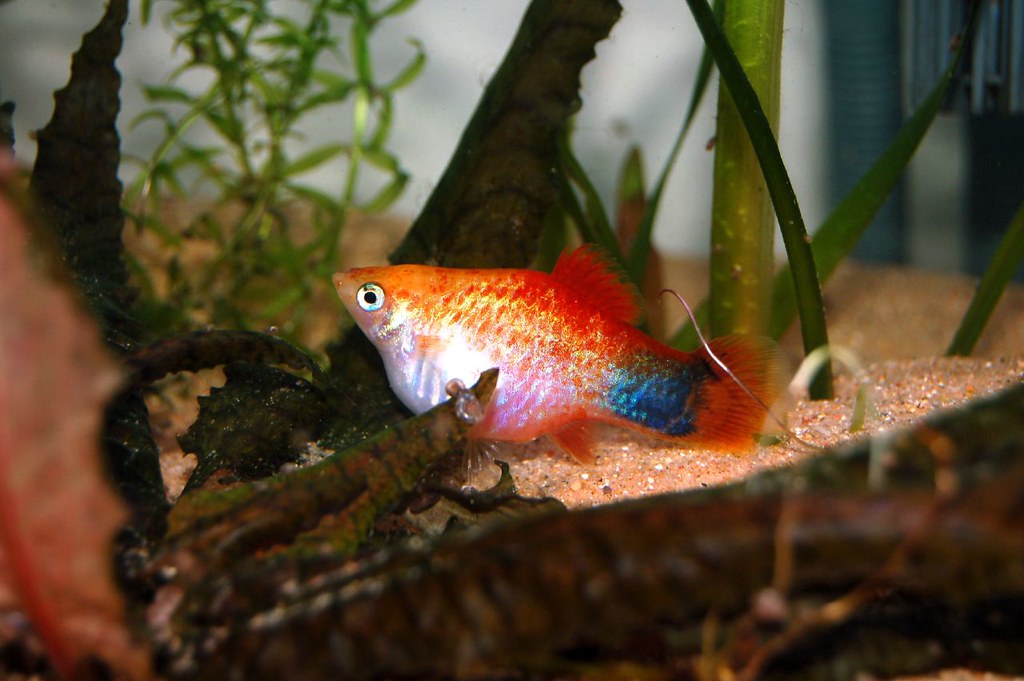
Platy fish have become staples in the American aquarium hobby because they combine eye-catching colors with remarkable hardiness. Available in solid colors of sunset orange, rich red, golden yellow, and unique patterns including tuxedo, mickey mouse, and wagtail varieties, platies bring vivid splashes of color to any aquarium. These medium-sized livebearers (reaching 2-3 inches) are extremely adaptable to varying water conditions, though they prefer temperatures between 70-80°F and neutral to slightly alkaline pH.
Platies are omnivorous, happily consuming high-quality flake foods, as well as occasional vegetable matter like blanched spinach or zucchini, which helps maintain their vibrant coloration. Their peaceful nature makes them excellent community fish that get along well with virtually any non-aggressive species of similar size.
Setting Up the Ideal Platy Environment
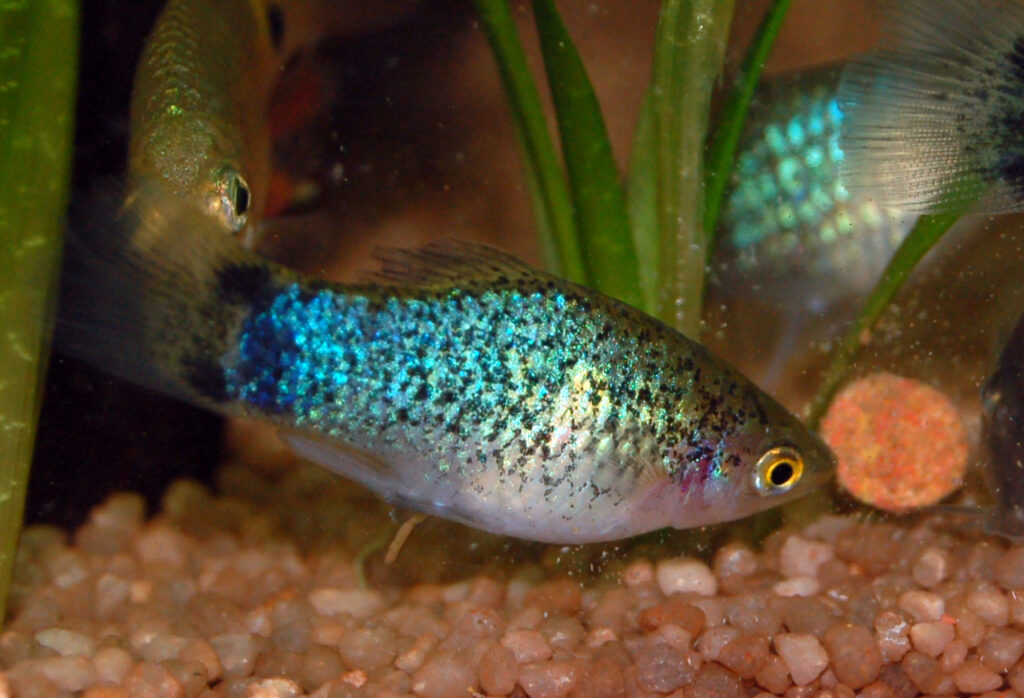
Creating a suitable habitat for platies requires minimal specialized knowledge, making them particularly accessible to beginning aquarists across the United States. A 10-20 gallon tank provides ample space for a small group of 4-6 platies, though larger tanks are always appreciated and allow for more natural behaviors. These fish appreciate moderate planting and some open swimming areas, which can be easily achieved with a combination of easy-care plants like Java fern, Anubias, or artificial decorations.
Platies spend time at all water levels but particularly enjoy middle to upper regions of the tank, making them visible and engaging pets. Their adaptability to standard tap water in most American municipalities (after proper dechlorination) further reduces the complexity of maintaining these colorful fish.
Swordtail Fish (Xiphophorus hellerii): Elegant and Resilient
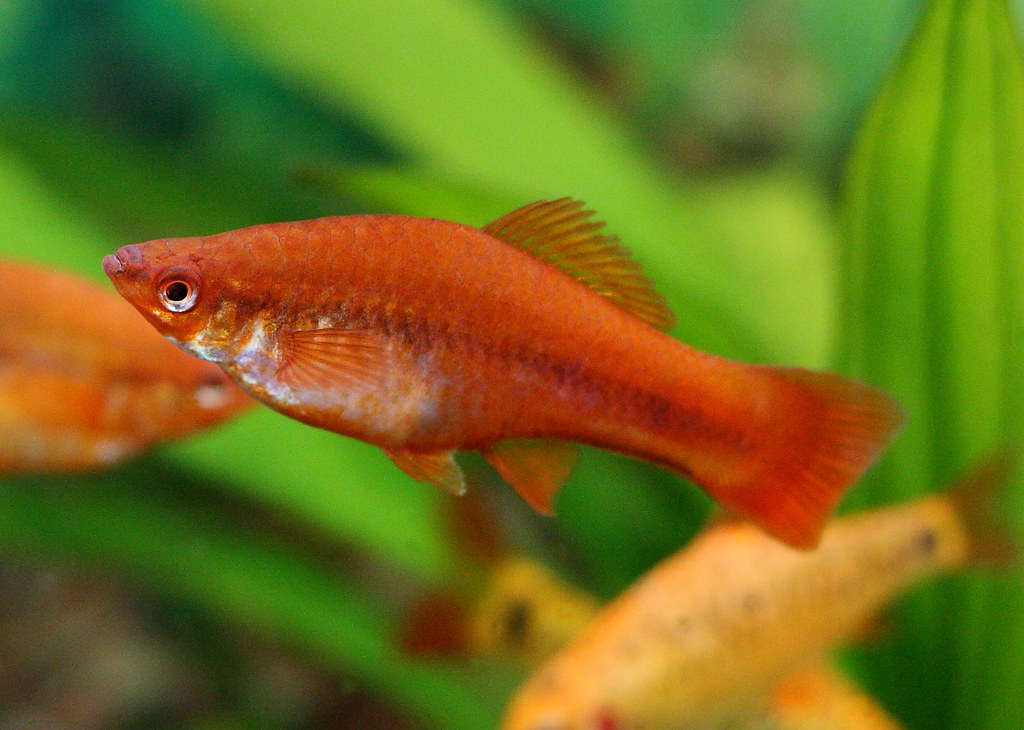
Swordtails earn their name from the distinctive elongated lower portion of the male’s tail fin, which resembles a sword and adds drama to their already impressive appearance. These fish come in striking colors including fire engine red, sunset orange, velvet black, and various patterned varieties like pineapple, koi, and tuxedo, making them living jewels in any aquarium.
Growing to about 4-5 inches (including the sword), these fish require slightly more space than their smaller cousins, with a minimum 20-gallon tank recommended for a small group. Swordtails are remarkably adaptable to water conditions found across the United States, though they prefer temperatures between 72-82°F and slightly hard, alkaline water—conditions naturally occurring in many parts of the country.
Swordtail Behavior and Compatibility
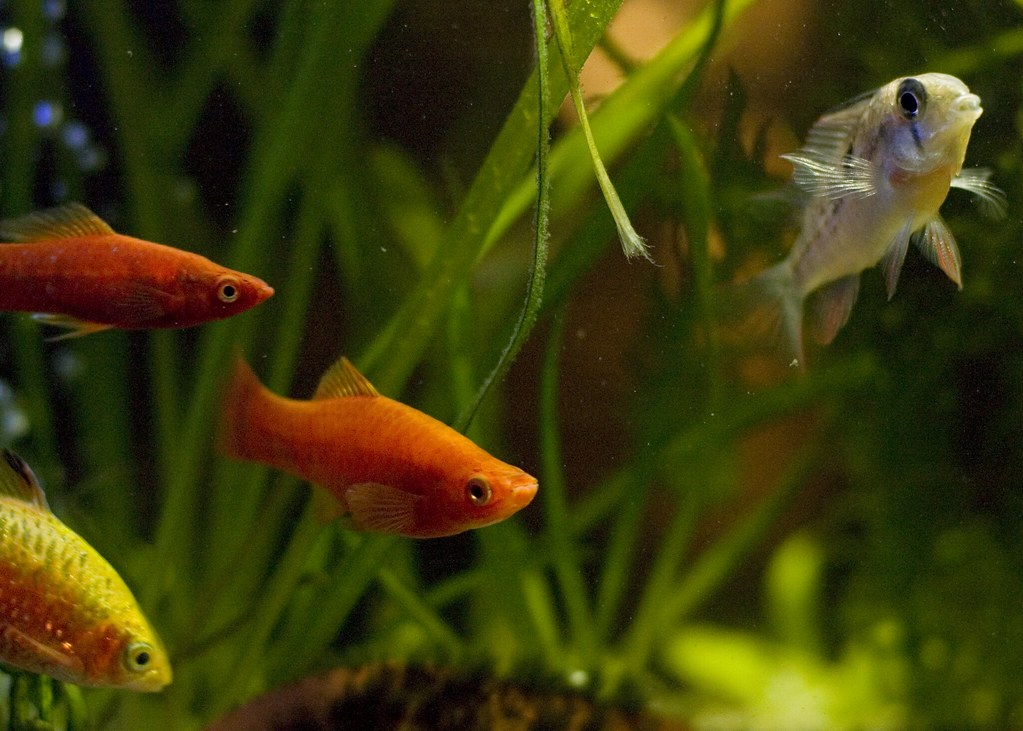
Swordtails exhibit fascinating social behaviors that make them engaging pets for aquarists of all experience levels throughout the United States. Males occasionally display to each other by extending their colorful dorsal fins and showcasing their swords, though serious aggression is rare in sufficiently sized tanks. Like their platy cousins, swordtails are livebearers that reproduce readily in captivity, often without any special intervention from the aquarist.
Their omnivorous diet is easily satisfied with quality commercial flakes or pellets supplemented with occasional frozen or freeze-dried treats like daphnia or brine shrimp. Swordtails are excellent community fish that pair well with other peaceful species of similar size, including tetras, rasboras, corydoras catfish, and peaceful bottom-dwellers.
Honey Gourami (Trichogaster chuna): Gentle Golden Gems
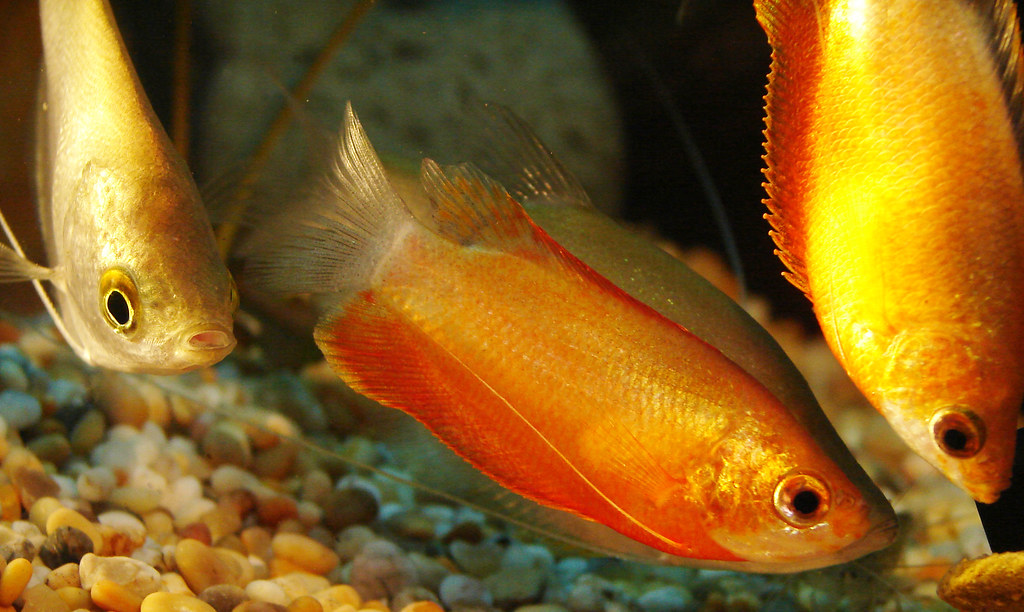
The honey gourami offers American aquarists a peaceful alternative to some of the more boisterous species on this list, combining subtle beauty with remarkable hardiness. Males develop a rich honey-amber to orange-gold coloration when in breeding condition, while females display a softer silvery-gold hue with a dark horizontal stripe. These labyrinth fish possess a special respiratory organ that allows them to breathe atmospheric air directly, making them extraordinarily resilient even in tanks with lower oxygen levels.
Growing to only about 2 inches in length, honey gouramis can thrive in tanks as small as 10 gallons, though they appreciate the additional swimming space provided by larger aquariums. Their shy yet curious nature makes them fascinating to observe as they explore their environment with methodical precision.
Creating the Perfect Honey Gourami Habitat
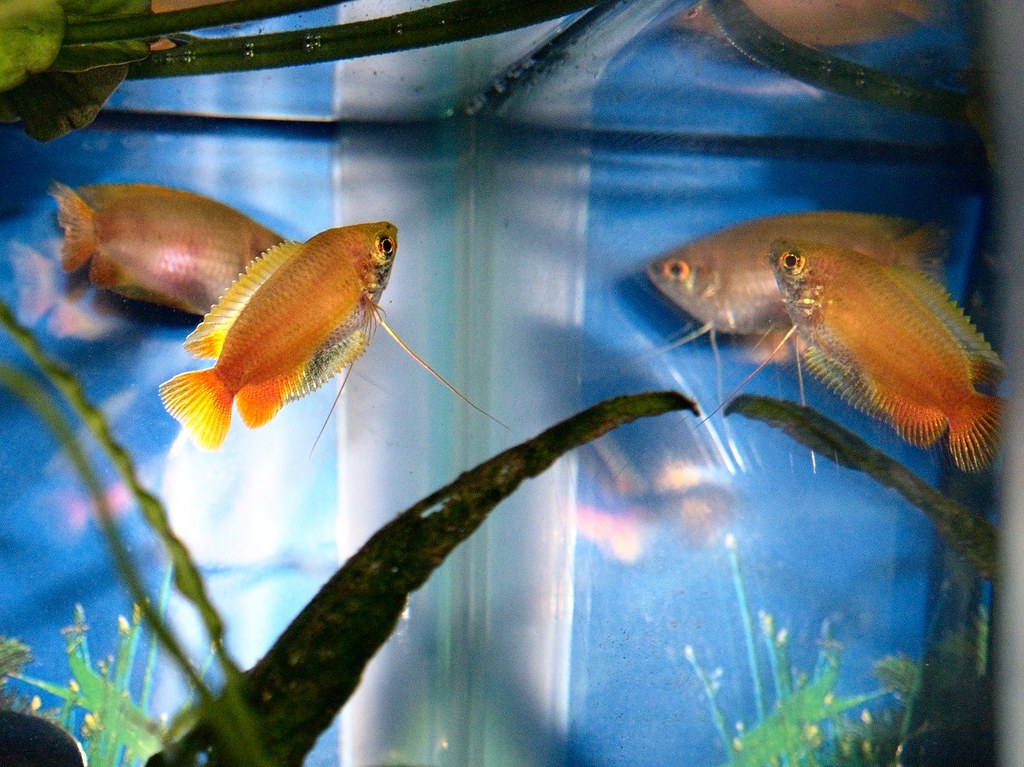
Honey gouramis thrive in planted aquariums that mimic their natural Asian habitats, though they adapt well to a wide range of setups common in American homes. These fish appreciate tanks with floating plants like frogbit or water lettuce, which provide security while allowing them to access the water’s surface for air. Temperature requirements of 74-82°F are easily maintained with a standard aquarium heater, and they prefer slightly acidic to neutral water, though they adapt to most municipal water supplies after proper conditioning.
Unlike some other gourami species, honey gouramis are genuinely peaceful and won’t harass tank mates, making them perfect for community tanks with other calm species. Their natural diet consists of small invertebrates and plant matter, easily replicated in the aquarium with quality flake food, small pellets, and occasional frozen treats.
Cherry Barb (Puntius titteya): Ruby Red Schoolers
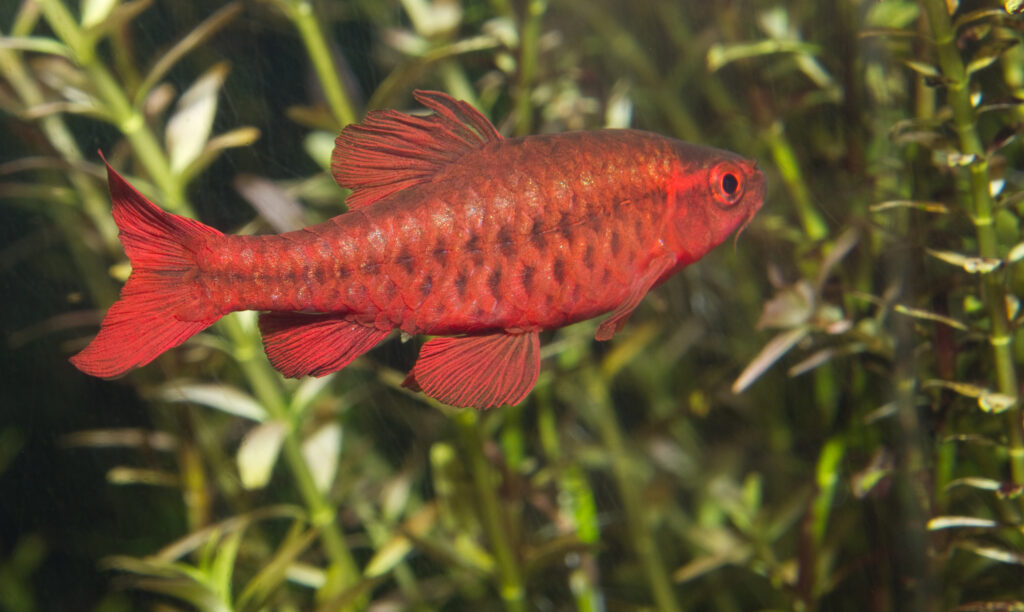
Cherry barbs bring a flash of crimson brilliance to the aquarium, with males developing a particularly intense red coloration that stands out dramatically against planted backgrounds. Native to Sri Lanka but bred extensively in captivity for the American market, these active schooling fish reach about 2 inches in length and display their best coloration and behavior when kept in groups of six or more.
Their hardiness is legendary among experienced aquarists, as they tolerate a wide range of water conditions found across different U.S. regions, from the soft water of the Pacific Northwest to the harder water of the Southwest. Cherry barbs prefer temperatures between 73-81°F and adapt to pH levels from 6.0 to 8.0, making them suitable for most established aquariums without special water treatment.
Cherry Barb Behavior and Tank Requirements
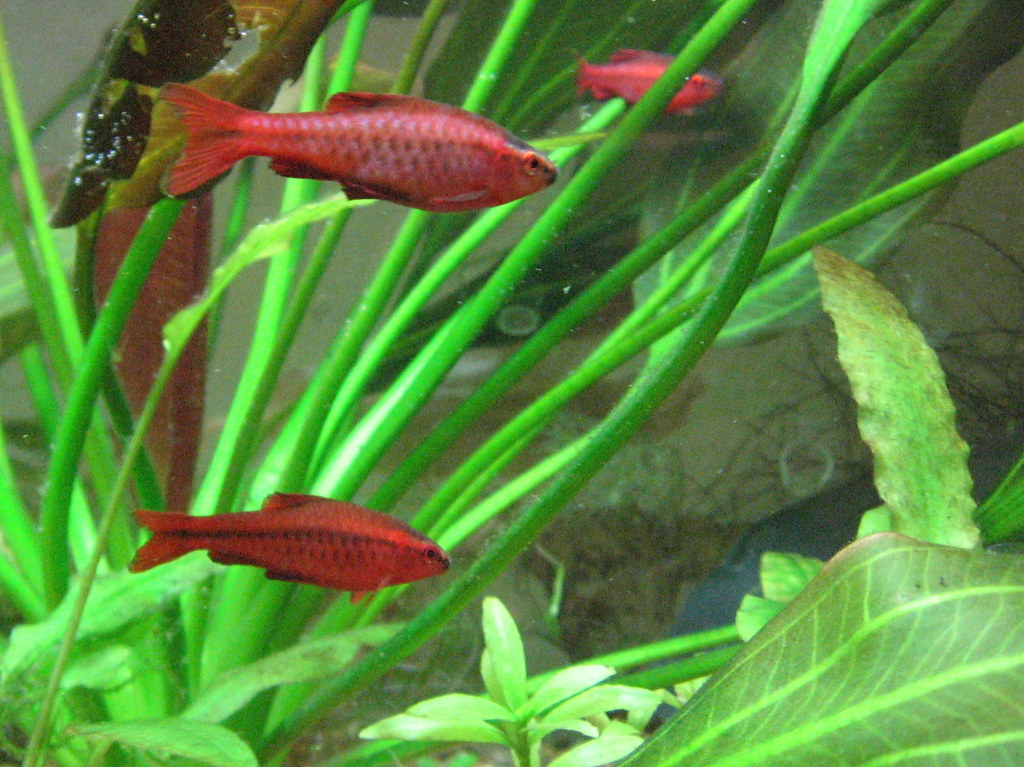
Cherry barbs exhibit fascinating schooling behaviors that make them particularly engaging for aquarists looking to create a dynamic display. When kept in proper groups, they form tight, coordinated schools that move throughout the aquarium in synchronized patterns, creating living art within your tank. A 20-gallon long aquarium provides ideal swimming space for a school of 8-10 cherry barbs, though larger tanks allow for more natural behaviors and potentially larger groups.
These fish appreciate planted aquariums with some open swimming areas and scattered hiding spots, which help them feel secure while still encouraging their active nature. Their omnivorous appetite is easily satisfied with quality flake or small pellet foods supplemented with occasional frozen treats like daphnia or brine shrimp to enhance their already spectacular coloration.
Setting Up Your First Colorful Fish Aquarium
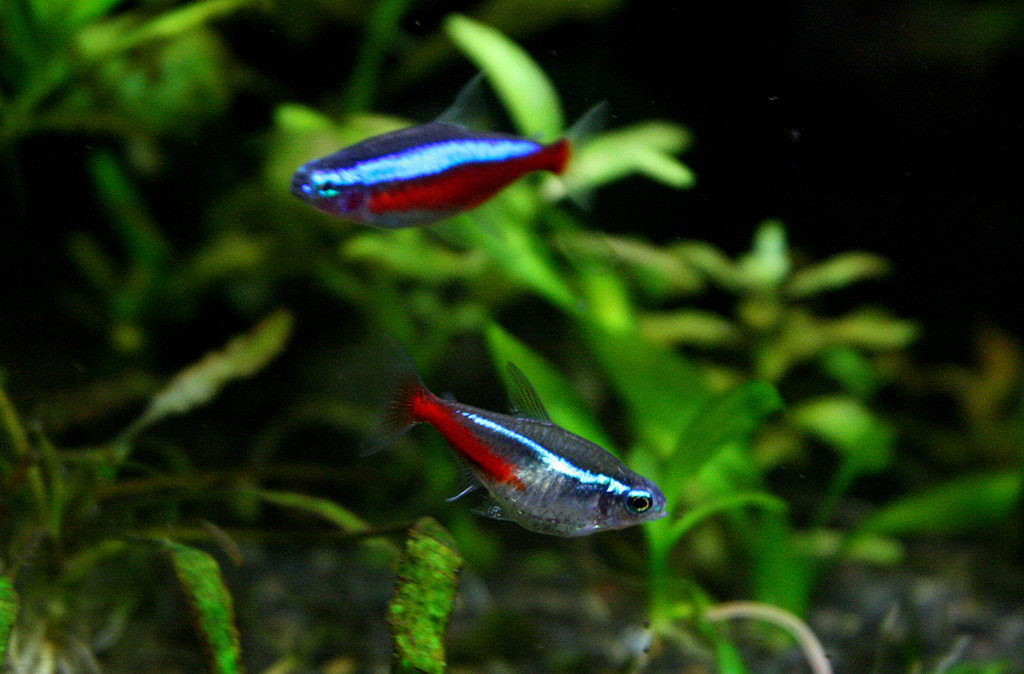
Creating your first home for colorful, easy-care fish requires some basic equipment readily available across the United States. Start with an appropriately sized tank—10 gallons is a good minimum for beginners, though 20 gallons provides more stability and flexibility for stocking. Essential equipment includes a reliable filter (hang-on-back filters are popular for beginners due to their simplicity), an adjustable heater sized appropriately for your tank, a thermometer, a basic LED light fixture, and a suitable substrate like gravel or sand.
Before adding any fish, the aquarium must complete the nitrogen cycle, which establishes beneficial bacteria that process fish waste—this typically takes 4-6 weeks and can be monitored with an inexpensive water testing kit. Incorporating live or artificial plants and appropriate decorations not only enhances the aesthetic appeal but also provides essential hiding spots for your fish to feel secure.
Common Care Mistakes to Avoid

Even with easy-care fish species, certain common mistakes can create unnecessary challenges for beginning aquarists across the United States. Overstocking is perhaps the most frequent error, while these colorful species are relatively undemanding, each fish still contributes to the bioload of the tank and requires adequate space for natural behaviors. The general rule of one inch of fish per gallon is outdated; instead, research the specific space requirements of your chosen species and err on the side of fewer fish rather than more.
Another common mistake is inadequate water maintenance—even the hardiest fish benefit from regular partial water changes of 25-30% every two weeks. Overfeeding not only leads to poor water quality but can cause health issues for the fish themselves; most species should be fed only what they can consume in about two minutes, once or twice daily. Finally, introducing fish too quickly to a new aquarium before the nitrogen cycle is established can lead to stress, disease, and potentially fish loss.
Conclusion: Finding Your Perfect Aquatic Companion
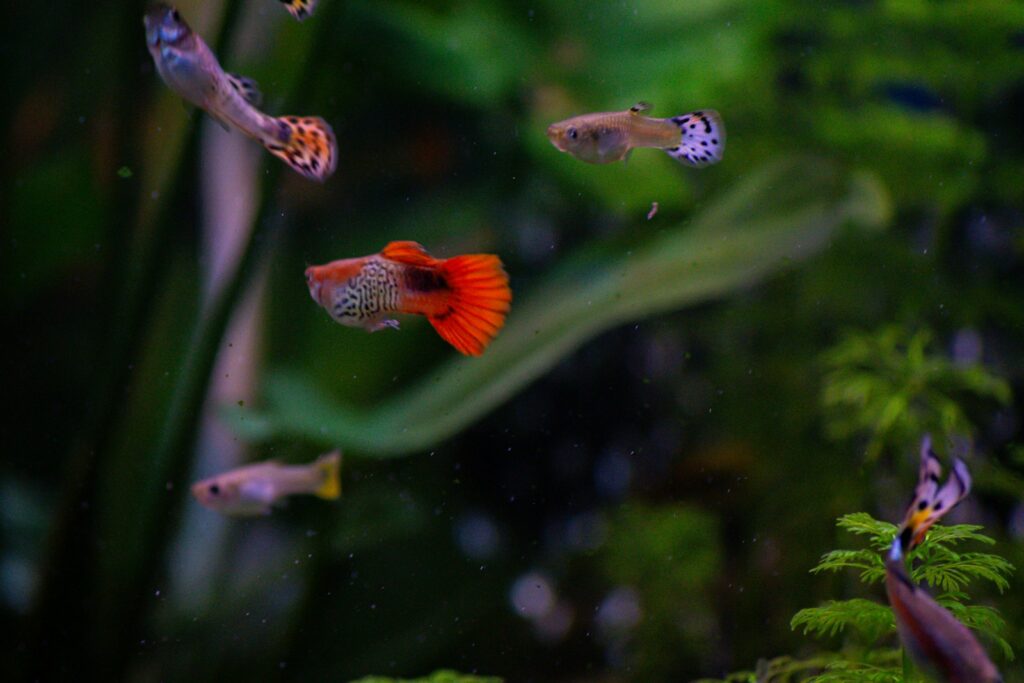
The world of colorful, easy-care fish offers American aquarists an accessible entry point into a rewarding hobby that combines natural beauty with relatively simple maintenance. Whether you’re drawn to the rainbow hues of guppies, the fiery brilliance of swordtails, the honey-gold glow of gouramis, or the crimson flash of cherry barbs, these species provide the perfect balance of visual appeal and beginner-friendly care requirements.
By starting with appropriate equipment, researching the specific needs of your chosen species, and avoiding common pitfalls like overstocking and overfeeding, you can create a thriving underwater ecosystem that brings color, movement, and natural beauty into your home. Remember that even the hardiest fish require consistent care and attention to their basic needs—with this commitment, your colorful aquarium can provide years of enjoyment and a fascinating window into the underwater world.

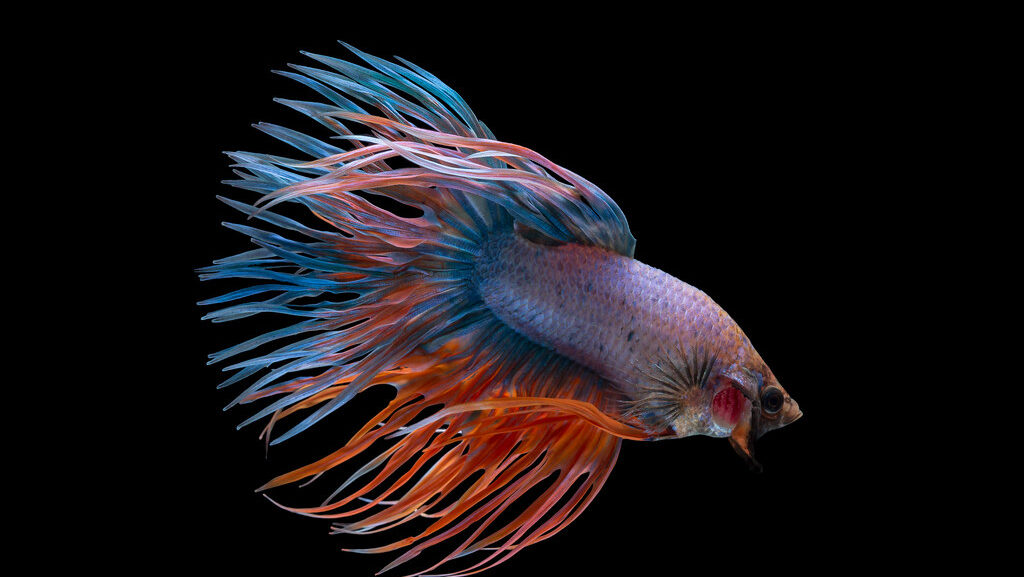

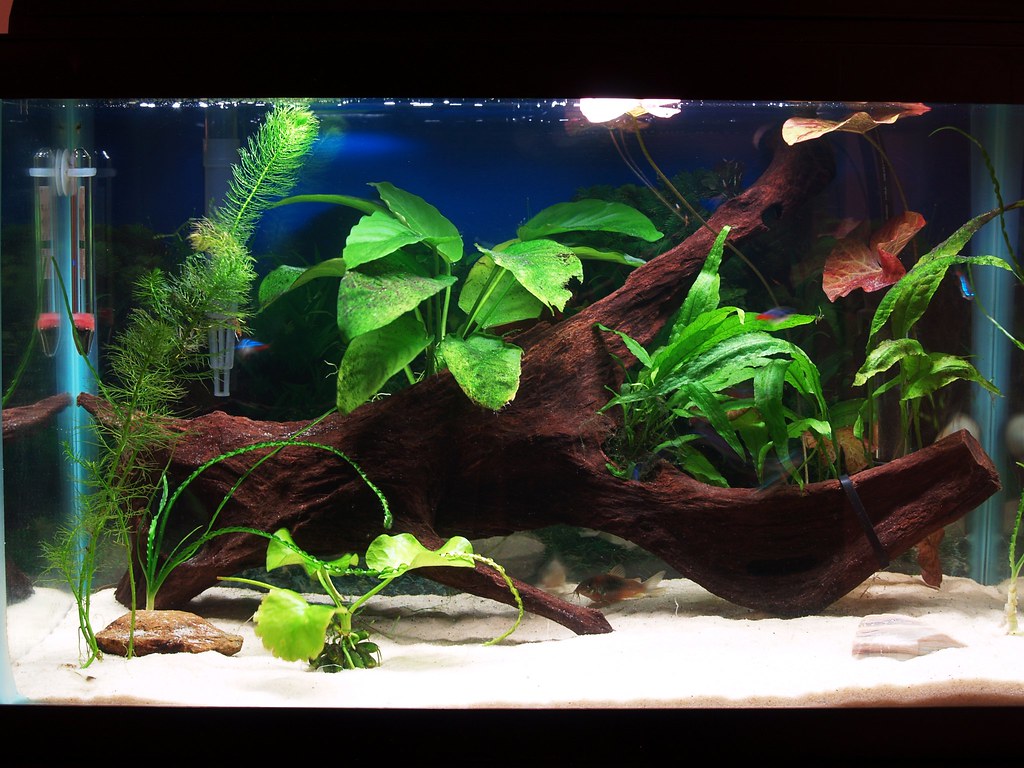
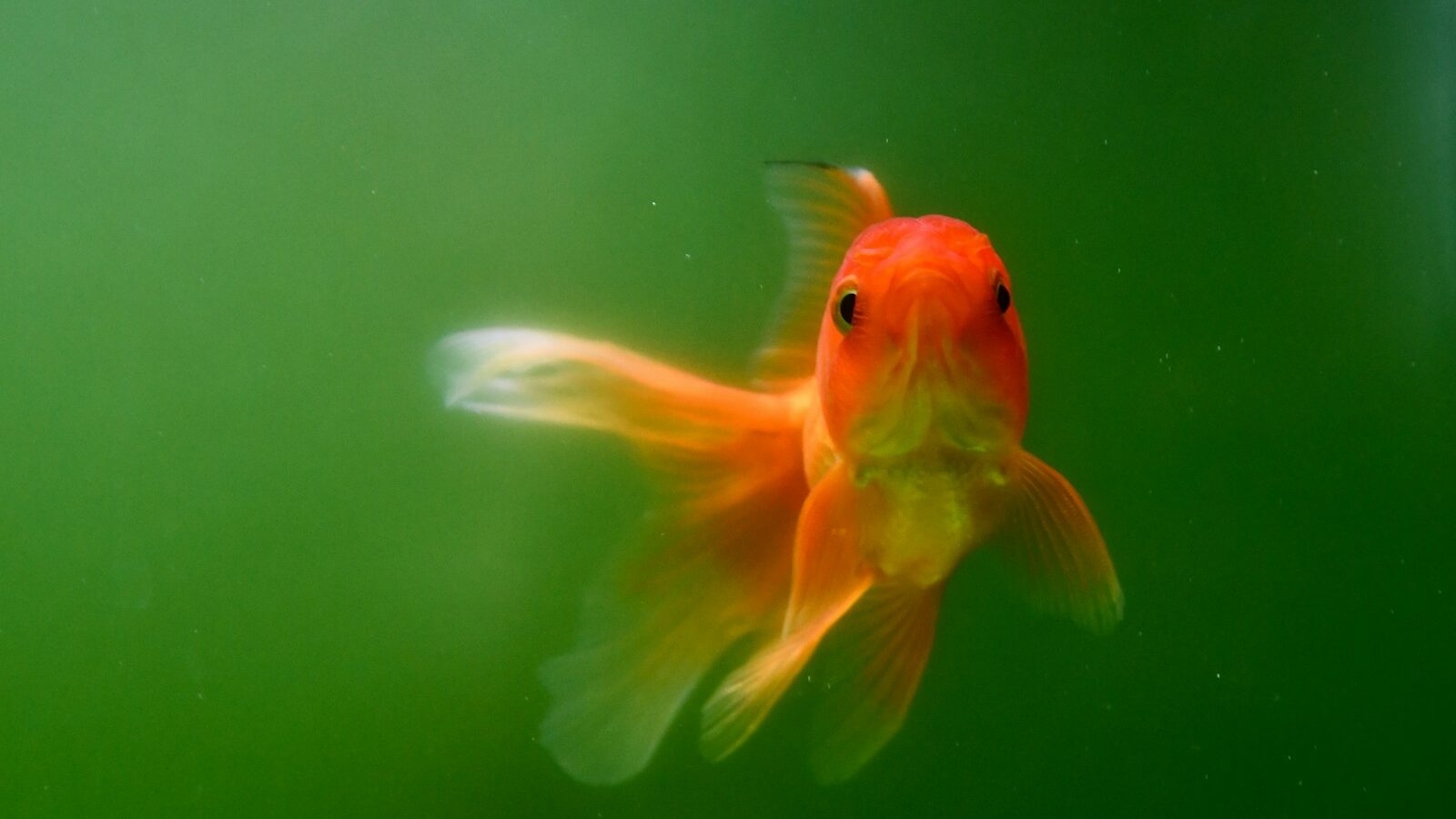
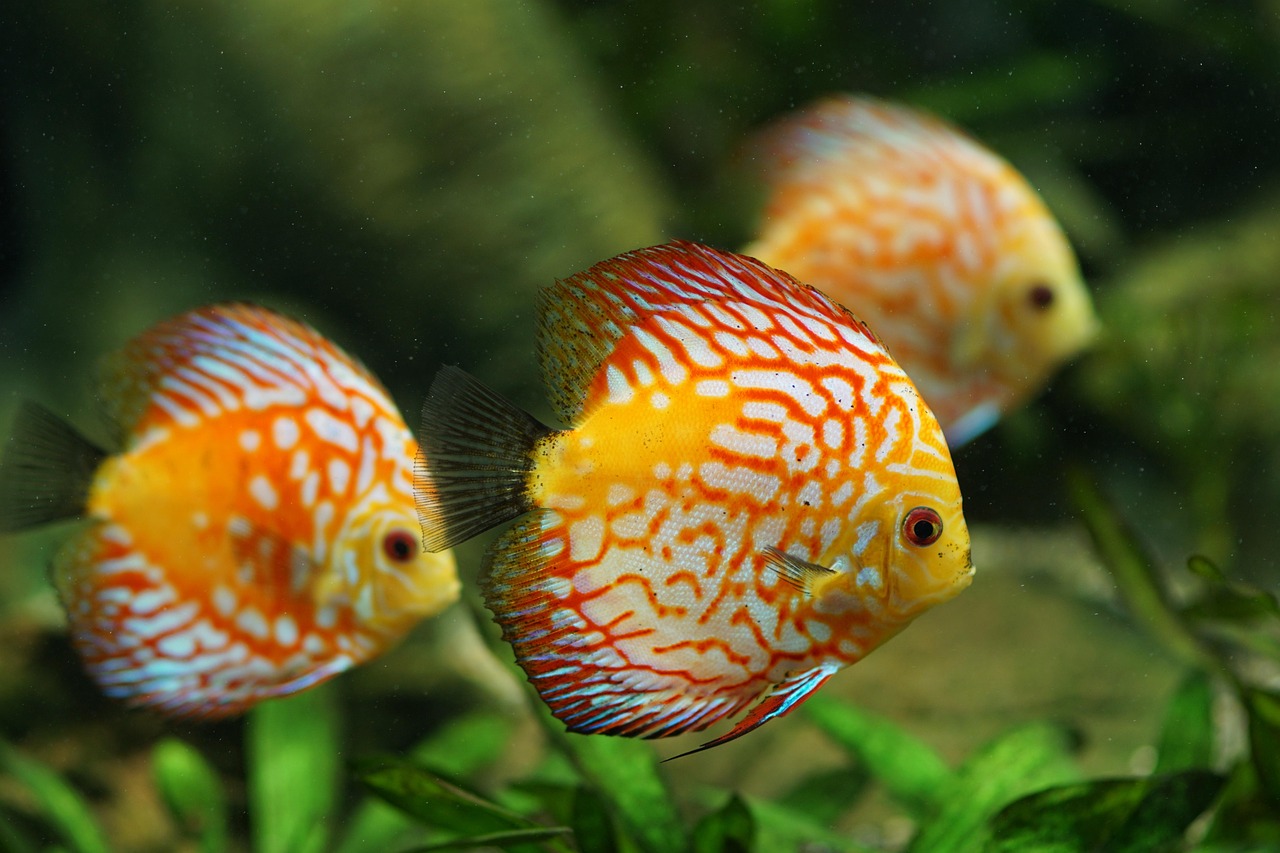
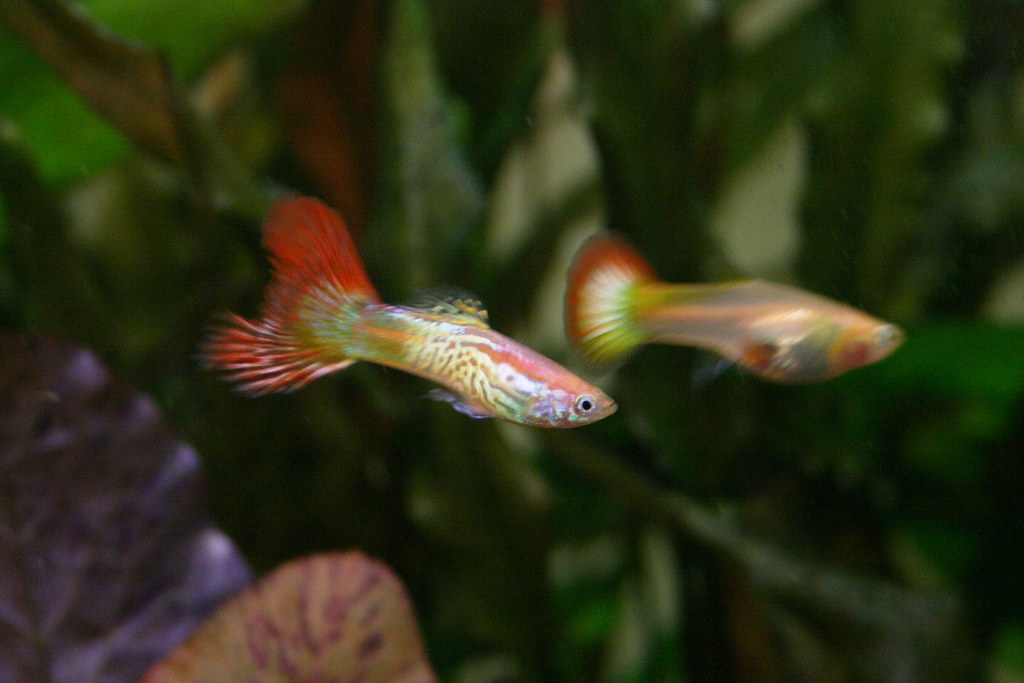
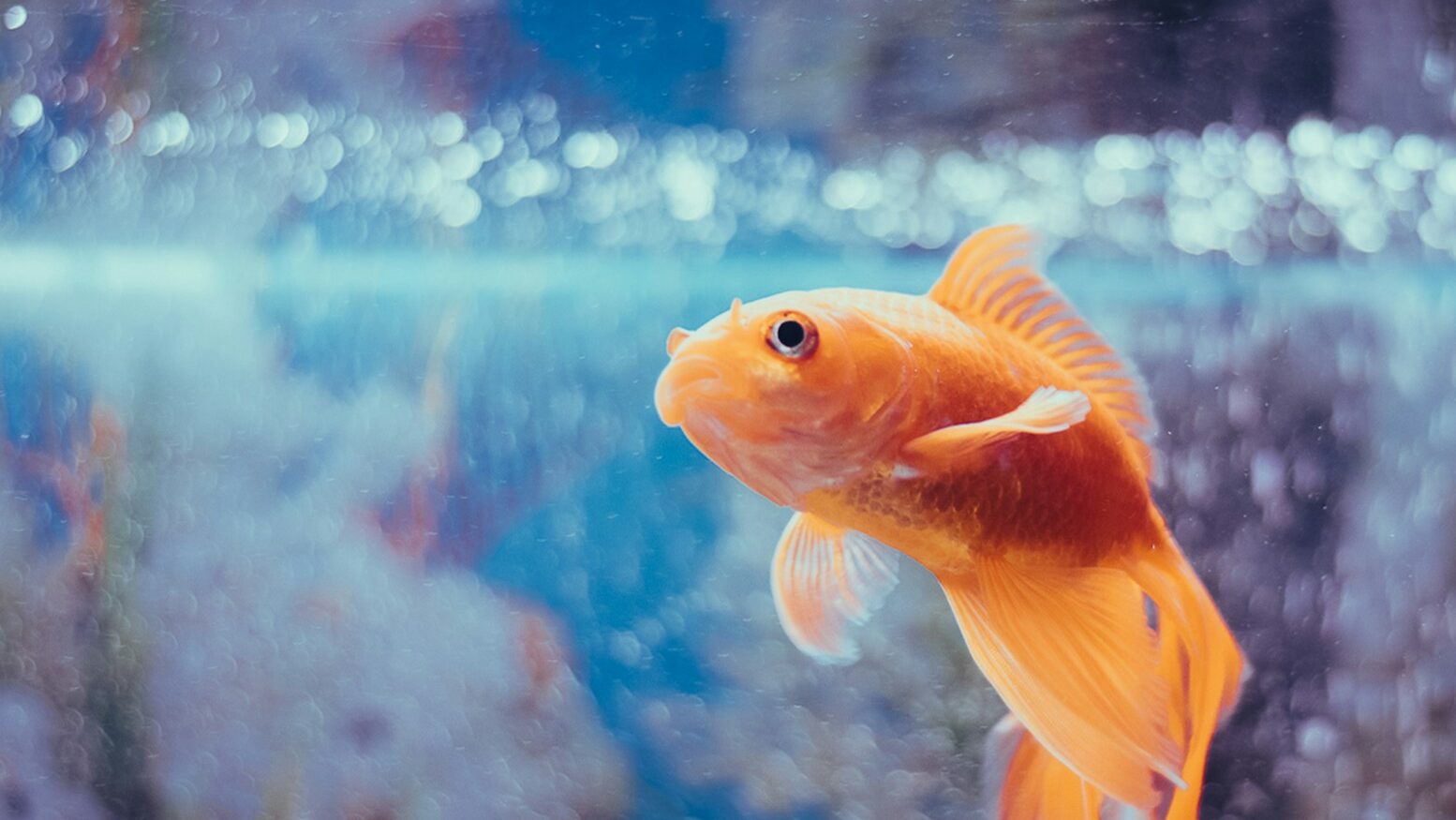
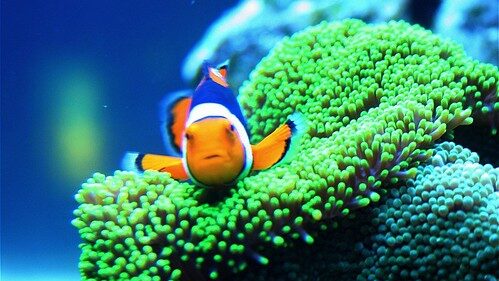



Leave a Reply